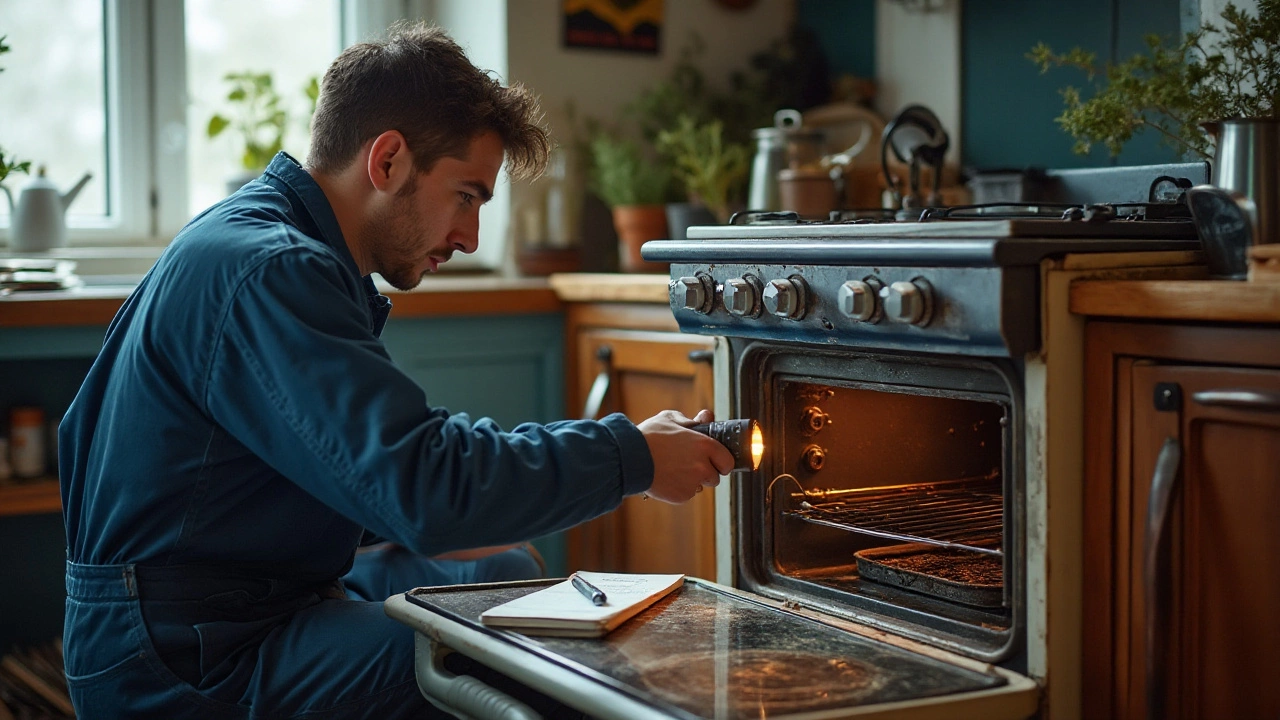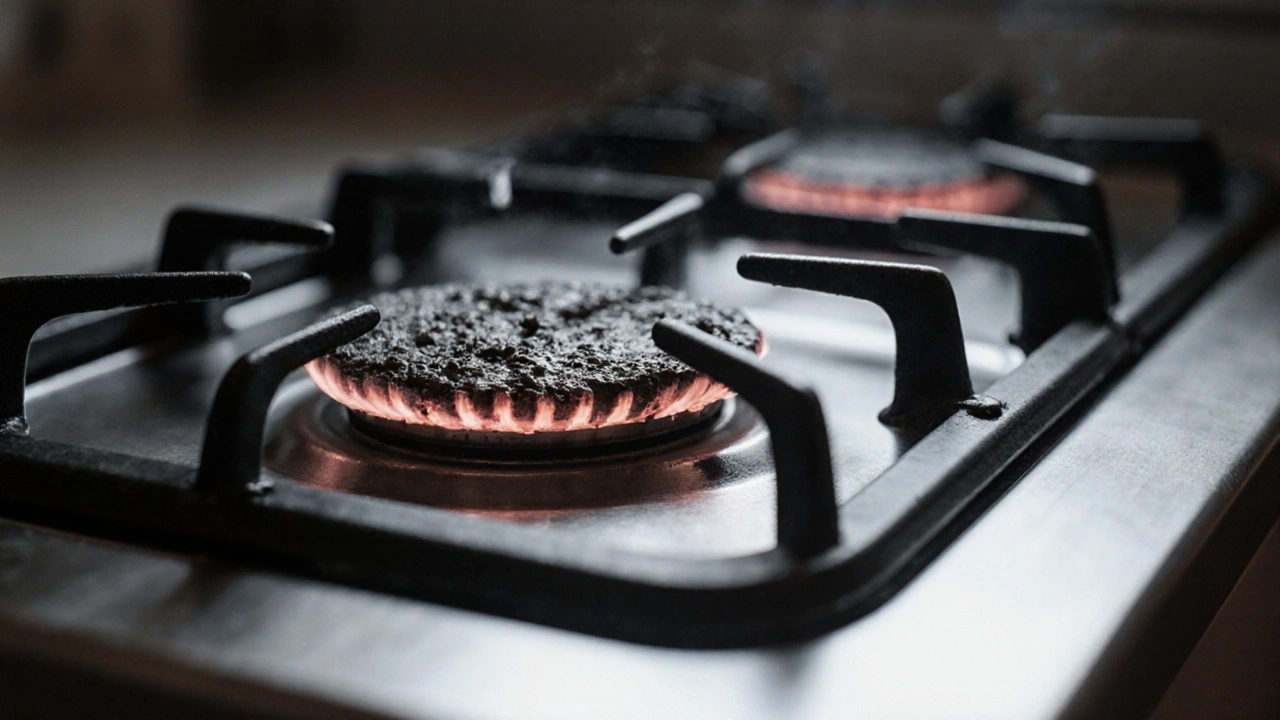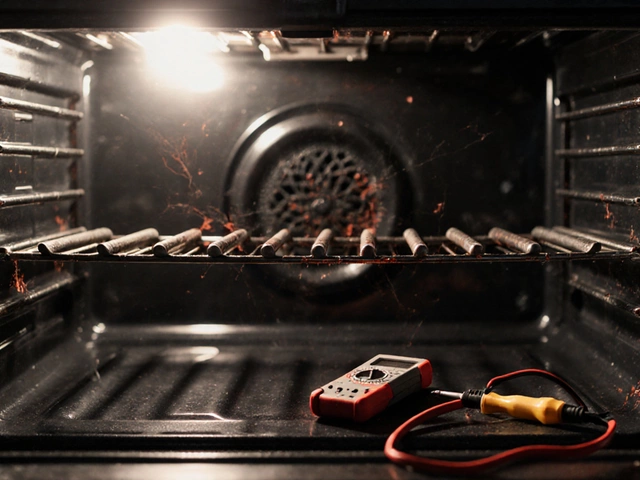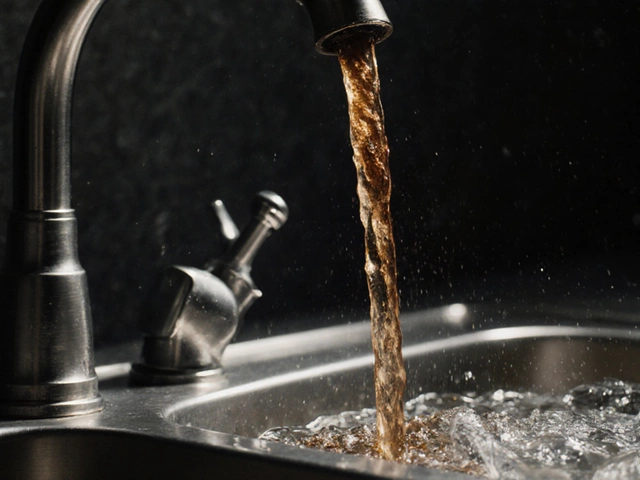Kitchens tend to become treasured landscapes where the warmth of memories is baked into every meal. It's no wonder why parting with a 20-year-old electric oven can feel bittersweet. But can the appliance that has served countless family dinners and holiday feasts be repaired, or is it time to embrace the shine of a new one?
This article navigates the quandary of repairing an old electric oven. We'll explore how to determine its condition and understand common issues that might just need a little TLC to get it back on its feet. From budget-friendly fixes to when it's smart to consider a replacement, make the right call for your kitchen's heart.
Assessing the Condition
When it comes to evaluating whether your 20-year-old electric oven still has a place in your kitchen, detailed assessment is key. Start by examining the exterior and interior of the unit. A thorough visual inspection can reveal a lot about its current shape. Look for details such as rust, worn-out gaskets, and any signs of physical damage that might hint towards larger underlying issues. Leaks or rusty spots could indicate long-standing heat and moisture problems. Don't forget to open the door, check the seal, and inspect the oven's rear for any signs of deterioration.
Pay attention to the electric oven's performance capacity as well. How well does it maintain temperature? Uneven cooking or persistent under-heating could suggest thermostat problems or electrical issues that warrant repair. Identify strange noises, which could indicate malfunctioning components like a fan or motor. These are red flags, often easier and cheaper to address compared to larger systemic failures.
"The true measure of worth in an appliance lies beyond its years—efficiency and capability should stand the test of time." - Reliable Appliance Repair
Another important factor is the frequency of breakdowns and needed repairs. If issues have been few and far between, it might be worth considering addressing and repairing them individually. Conversely, frequent breakdowns can suggest an approaching end of the oven's life. Consider making a list of any past repairs to compare the cost-effectiveness of continued repairs versus replacement.
When assessing an old electric oven's condition, energy efficiency is another vital aspect. Check energy bills over time. A noticeable increase could indicate your appliance is drawing more power due to age-related inefficiencies. Energy efficiency ratings weren’t as stringent years ago, and this kind of appliance may not meet today’s green standards.
It's also valuable to check if replacement parts are still offered for your oven model. Availability of parts can be a telltale sign of whether repairs are feasible. Many manufacturers or third-party repair shops stock parts for older models, but this isn't always guaranteed. Consult with repair experts about part availability. The rule of thumb is that if part acquisition becomes more of a hassle or price surpasses the budget, it might be time to consider new options.
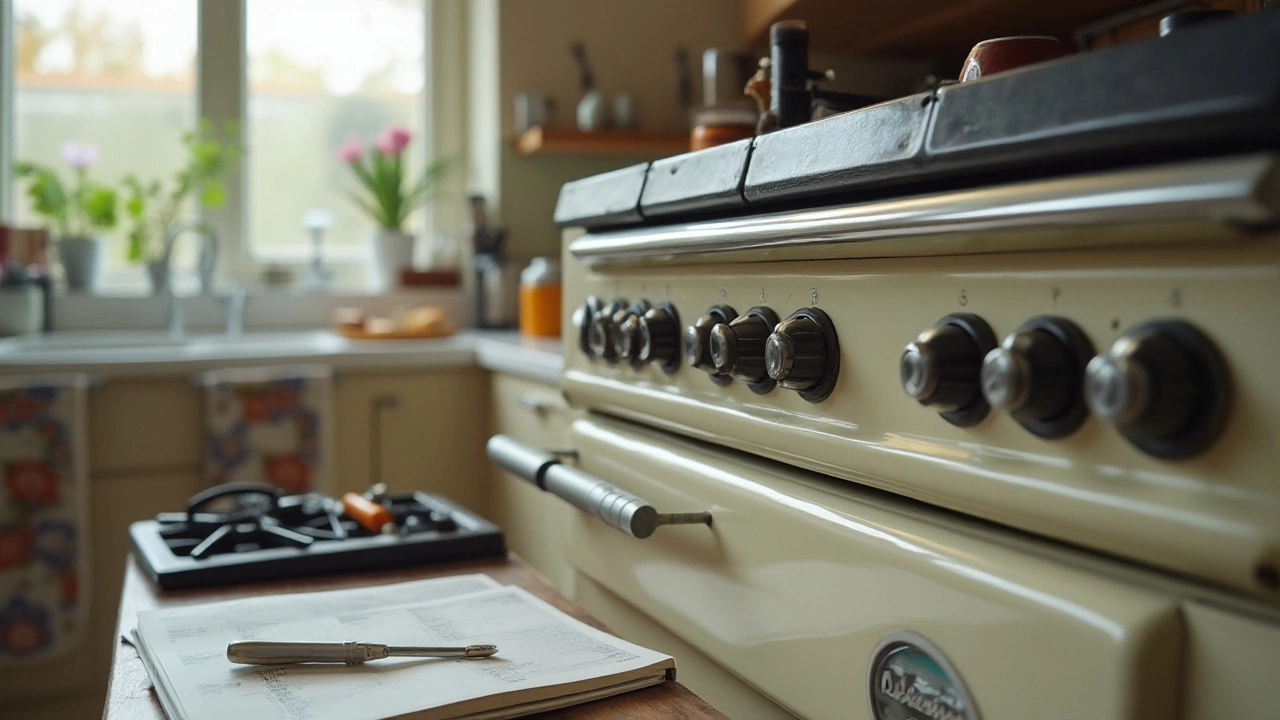
Common Repairable Issues
Deciphering the ailments of a 20-year-old electric oven is a bit like diagnosing the cough of an old friend—there's history involved, but the symptoms can often be quite telling. The good news is, many common issues are repairable without resorting to the dreaded call of replacement. So let's roll up our sleeves and dive into some of the typical problems that plague these seasoned culinary companions, starting with temperature anomalies and odd noises.
A common issue with aging ovens is inconsistent heating. If your oven's temperature control seems to be working on whims, the culprit might be a faulty temperature sensor or a worn-out heating element. Start by checking the oven's thermostat using an oven thermometer—if temperatures wildly differ from set points, that's your problem right there. Replacing a temperature sensor is a manageable task and parts are often available even for older models. Simply unscrew it from the oven's backend and replace it with a new one, making sure to reconnect the wires correctly. A faulty heating element can also cause uneven baking, and this too can be replaced by removing the screws, detaching connectors, and popping in a new one.
Ignition and Lighting Issues
Ignition or lighting failure is typically experienced in electric ovens as well. If your oven refuses to light up or the burner isn't igniting, it might be an issue with the igniter or the glow bar. These components wear out over time with frequent use. To test, observe whether the igniter glows when the oven is on; a defective igniter won't glow fully. Replacing an igniter is usually straightforward, requiring just basic tools and a replacement part. Carefully unscrew the panel, detach the old igniter, and secure the new one in place. If replacing this doesn’t do the trick, sometimes it pays more to have a professional's touch only if it ensures the continued functioning of your trusty appliance.
Oven door issues also rank high among the common ailments. A door that won't shut properly can lead to heat loss, uneven cooking, and increased energy consumption. Check the door hinges first—after years of opening and shutting, these can become bent or loose. Adjusting or replacing the hinges could solve the problem, ensuring the door creates a good seal when closed. Additionally, oven door seals wear out over time, and a simple replacement can often restore the oven's efficiency. You wouldn't want your energy bills climbing, especially during holiday baking sprees.
"Repairing a trusted home appliance, such as an oven, not only saves money but also reduces environmental impact by keeping electronics out of landfills," notes Christine Spolar, a seasoned household tech expert.
When it comes to electric ovens, power issues are not uncommon, especially in old models. If your appliance is completely unresponsive, start by checking the basics: ensuring it is plugged in and the circuit breaker hasn't tripped. If that base is covered and still there's silence, it could be an internal fuse failure or a defective control board. These more intricate repairs may require a skilled hand but often are still cheaper than investing in a new oven entirely.
| Common Issue | Potential Fix |
|---|---|
| Inconsistent Heating | Replace temperature sensor or heating element |
| Oven Won't Light | Check and replace igniter |
| Door Won't Shut | Adjust or replace door hinges and seals |
| No Power | Check circuit or replace internal fuses/control board |
In weighing whether to repair or replace, these common issues provide a clear pathway. Understanding them can help in making an informed choice that suits both your culinary needs and your wallet. And remember, often these repairs recycle more than just hardware, they recycle the sentiment embedded in each meal the oven's cooked up.

Cost vs. Replacement
Repairing a electric oven that's been around for two decades isn't always a straightforward decision, especially when adding up the costs. On the one hand, your old oven might have the potential to work just as well as new, if the right parts are fixed. On the other, with technological advances, newer models offer features you might find enticing. It's essential to weigh up whether plunging funds into repairs makes more sense than investing in a replacement.
Begin by considering the oven's condition and usage frequency. An oven that has been well-maintained might only need minor repairs, whereas those with significant wear and tear may rack up higher bills. A typical repair such as replacing the heating element could set you back between $100 to $300. More complex issues involving electrical or control board problems can easily reach $400 or more. Compare this against the cost of a new oven, which ranges from $500 for a basic model to over $3,000 for high-end appliances. Analyze how many times you've called a repair technician in the last year — frequent issues could indicate it's nearing the end of its life cycle.
When it comes to replacement, the benefits extend beyond cost. Modern electric ovens often feature energy-efficient designs, saving you money on electricity bills in the long run. They're also equipped with cutting-edge technology like smart controls, steam cleaning, and convection settings, which could be game-changers in your culinary adventures. However, if the oven holds sentimental value, and fits perfectly in your current kitchen setup, repairs might still be the best option. According to Appliance Servicers Association, "if the repair cost is more than 50% of the price of a new one, it might be time to move on."
Before making a final decision, consider the environmental impact. Appliance recycling or proper disposal practices can lessen landfill contributions. Meanwhile, repair means prolonging the life of existing resources. Old oven fix techniques not only save parts from waste but also allow you to retain a piece of kitchen history. Choose what's best for you, keep in mind both the financial implications and future benefits. This practical approach helps maintain a balance between maintaining a sustainable eco-footprint and ensuring efficient kitchen functionality.
Long-Term Savings
- A new energy-efficient oven could save about 10-15% off your energy bill annually.
- Many utility companies offer rebates for purchasing ENERGY STAR-certified appliances, which could offset the initial cost.
These numbers and features highlight what's at stake. Understanding both the financial and environmental costs will lead you to the right choice. After all, it's not just an oven—it's the hearth of your home.

DIY Solutions and Tips
For those brave enough to venture into the world of DIY, repairing a electric oven that's nostalgically seasoned with twenty years of use can be a rewarding task. Don’t be put off by your oven's age; instead, consider what repairs can make it back into the kitchen powerhouse it once was. Start by ensuring your safety — unplug the appliance before you do anything. You can use tools like multimeters to safely test various components without risking personal injury.
Common repair targets include heating elements, thermostats, and faulty wiring. Let’s dig into one of the most frequent issues: the heating element. If your oven isn’t reaching temp, you can bet the element may be on its last legs. To check it, gently remove it after turning off the electricity, and inspect it for any visible damage such as blisters or breaks. Replacement parts for the most popular oven models can still be found for a modest sum. Often, when an oven doesn't heat properly, it's due to these components needing a refresh.
When it comes to thermostats, remember these little guys aren't invincible. If your food always seems to turn out overcooked, your oven's thermostat could be to blame. While replacing it isn't rocket science, it involves a bit of delicate maneuvering at the back of your oven where it's often located. A misplaced or malfunctioning thermostat can affect your cooking precision dramatically. An exact replacement can breathe new life into your appliance, making evenings in the kitchen a joy once more.
Then there’s wiring — the veins of your kitchen repair. High heat and time can degrade wires, creating erratic behavior. A visual inspection can help identify burnt or melted wires which are culprits for electrical shorts. If you spot trouble, it’s time to replace these wires. Using the appropriate gauge is vital, so double-check your oven's manual or manufacturer guidelines to avoid any missteps here.
In the words of Thomas Edison, "The three great essentials to achieve anything worthwhile are: hard work, stick-to-itiveness, and common sense." A bit of Edison's wisdom goes a long way in DIY repairs, ensuring you approach each challenge with innovation and patience.
Finally, once you've dipped your hands into fixing your old oven, routine maintenance can prevent future hiccups. Cleanliness is key — gently scrub away residue build-up on your heating elements and cavities to ensure they won’t affect performance. Vacuuming out dust from those hard-to-reach spots where grease collects can aid efficiency significantly as well.
For those who appreciate numbers, you might be interested to learn that repairing a kitchen appliance like an electric oven typically saves about 50% of the cost versus buying a new one. Investing a little time in understanding your appliance's quirks can extend its life for years, not to mention the satisfaction you’ll get from knowing you brought it back from the brink. Who knew an appliance maintenance journey could save so much?
